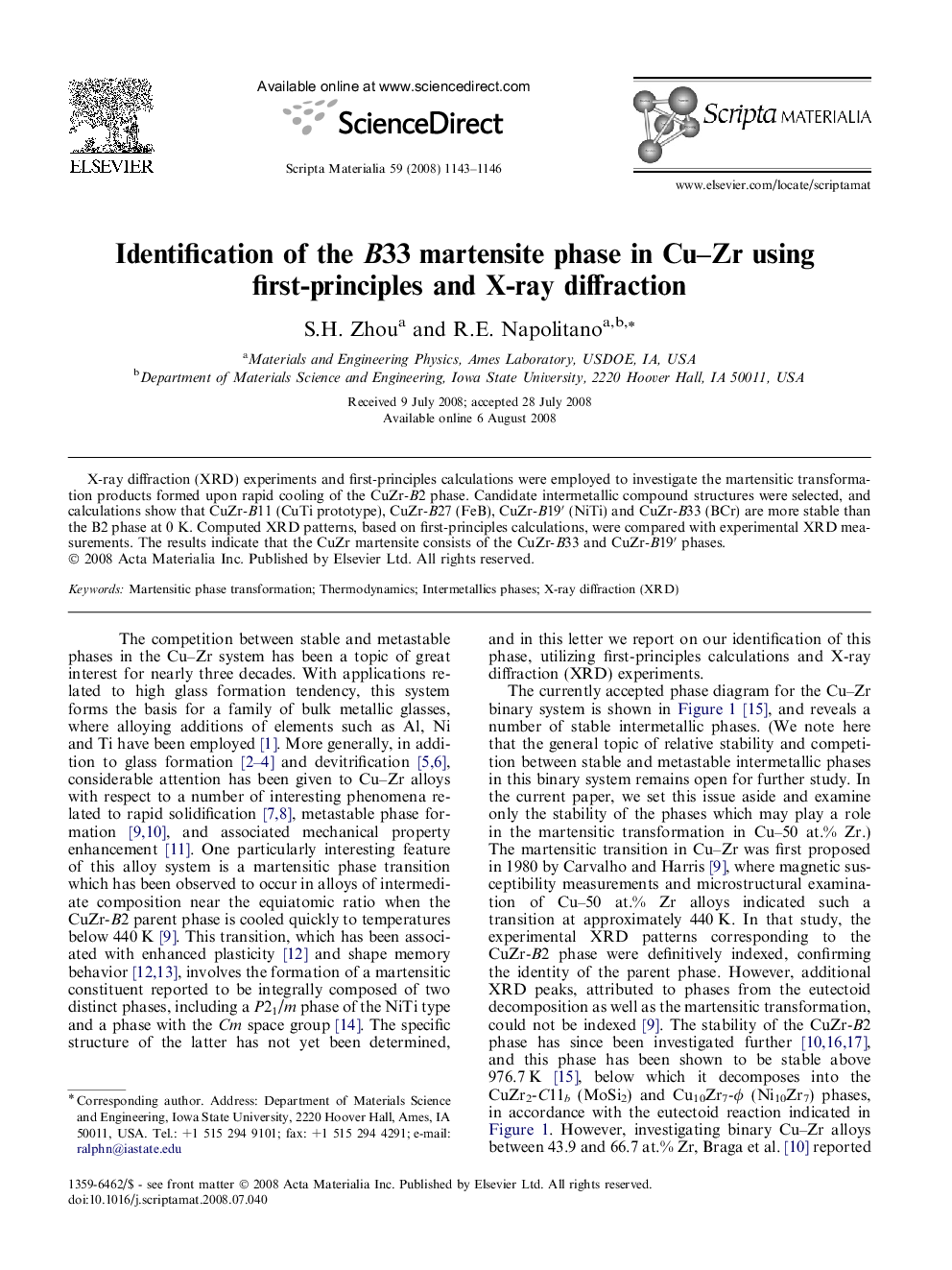| Article ID | Journal | Published Year | Pages | File Type |
|---|---|---|---|---|
| 1502242 | Scripta Materialia | 2008 | 4 Pages |
Abstract
X-ray diffraction (XRD) experiments and first-principles calculations were employed to investigate the martensitic transformation products formed upon rapid cooling of the CuZr-B2 phase. Candidate intermetallic compound structures were selected, and calculations show that CuZr-B11 (CuTi prototype), CuZr-B27 (FeB), CuZr-B19′ (NiTi) and CuZr-B33 (BCr) are more stable than the B2 phase at 0 K. Computed XRD patterns, based on first-principles calculations, were compared with experimental XRD measurements. The results indicate that the CuZr martensite consists of the CuZr-B33 and CuZr-B19′ phases.
Related Topics
Physical Sciences and Engineering
Materials Science
Ceramics and Composites
Authors
S.H. Zhou, R.E. Napolitano,
